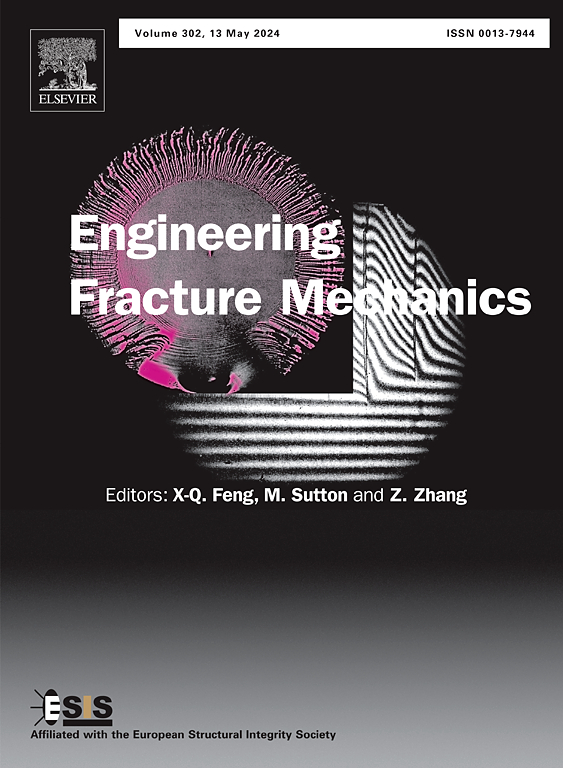A crack-bridging model considering microstructural randomness in biological composite materials
IF 4.7
2区 工程技术
Q1 MECHANICS
引用次数: 0
Abstract
The macroscopic mechanical properties of biological composite materials, such as strength and fracture toughness, are determined by both their constituents and microstructure. Conventional researches often assume that these properties can be modeled using representative volume elements that features microstructural periodicity. However, in reality, such periodicity is absent, and the mechanical and geometric properties of the constituents exhibit spatial randomness, profoundly affecting the material’s macroscopic behavior. In this study, we modify the classic crack-bridging model to account for microstructural randomness. Using the brick–mortar microstructure of nacre as an example, we investigate how microstructural randomness influences macroscopic fracture toughness and the mechanical properties of the crack-bridging zone. The results demonstrate that microstructural randomness weakens macroscopic fracture toughness, in line with the classic weakest-link principle. However, the randomness in macroscopic fracture toughness is significantly reduced compared to microstructural randomness, suggesting that the weakening effect induced by microstructural randomness is suppressed. Further analysis reveals that as the length of platelets increases, the weakening effect of microstructural randomness becomes less significant. This indicates that the microstructural stress transfer mechanism is responsible for suppressing the negative impact of microstructural randomness. Beyond the conventional strengthening and toughening effects, our results highlight a new advantage of well-designed microstructures in biological materials, offering deeper insights into how microscopic heterogeneity influences the macroscopic fracture toughness of these materials.
求助全文
约1分钟内获得全文
求助全文
来源期刊
CiteScore
8.70
自引率
13.00%
发文量
606
审稿时长
74 days
期刊介绍:
EFM covers a broad range of topics in fracture mechanics to be of interest and use to both researchers and practitioners. Contributions are welcome which address the fracture behavior of conventional engineering material systems as well as newly emerging material systems. Contributions on developments in the areas of mechanics and materials science strongly related to fracture mechanics are also welcome. Papers on fatigue are welcome if they treat the fatigue process using the methods of fracture mechanics.

 求助内容:
求助内容: 应助结果提醒方式:
应助结果提醒方式:


